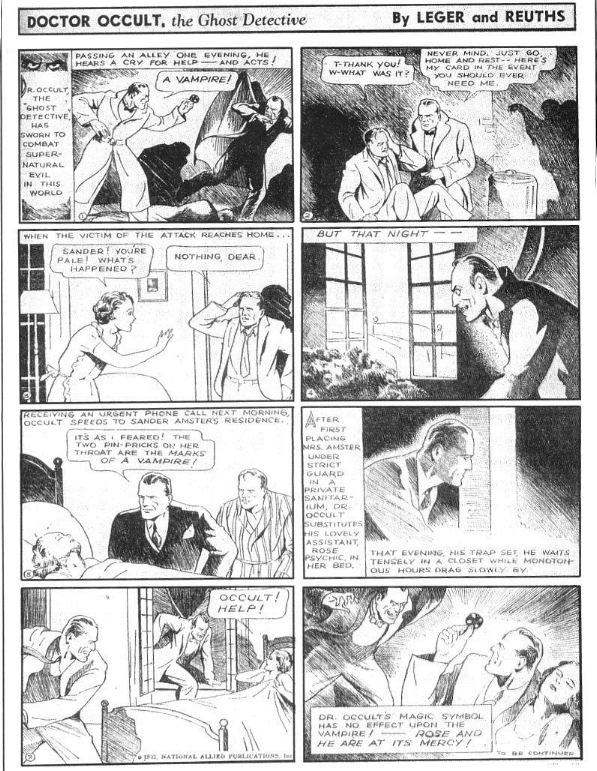This question does not lend itself to an easily correct answer because during the 1920s and 1930s there was an explosion of larger-than-life heroes whose powers and abilities bordered on the superhuman, including Doc Savage, Man of Bronze, (Doc Savage Magazine #1, Mar. 1933), and Mandrake the Magician (King Features Syndicate, June 11, 1934.)
Adding to this list would be the precursor heroes who preceded Doc Savage, including the Scarlet Pimpernel (1903), Tarzan of the Apes (1912), John Carter of Mars (1911) and Zorro (1919). While they were not superhuman, their feats were extraordinary in comparison to most mortal men.
One of the first superheroic characters of comicdom is the legendary Doctor Occult created by Jerry Siegel and Joe Shuster (More Fun Comics #6, 1935). Yes, the same two writers who would later produce the world's most famous superhero, Superman.

The character first appeared in New Fun Comics #6 in 1935. He was a supernatural detective, whose detecting style was very much in the style of Sam Spade, only with supernatural abilities. He was assisted by his butler Jenkins in one adventure. His girlfriend/partner called Rose Psychic appeared in his first adventure and then returned again later in the series.
He also appeared in Centaur Publications' The Comics Magazine #1 under the name "Dr. Mystic". This was the same character because his story, "The Koth and the Seven", began in The Comics Magazine and continued in DC's More Fun Comics #14-17 (issues also designated as vol. 2, #2-5). In this story, he travels to a mystic realm where he flies and wears a cape, making him the first caped comic book superhero. This story also introduced the Seven, a group of mystics who would later be retconned into having raised Richard Occult and Rose Psychic. Doctor Occult made his last original appearance in More Fun Comics #32 in 1938.
He later appeared in Crisis on Infinite Earths (1986), The Books of Magic (1991), Vertigo Visions: Dr. Occult (June 1994), and The Trenchcoat Brigade (1999).

To be fair, Mandrake the Magician appeared in a newspaper serial in 1934. But I started with the first comic appearance.
Mandrake the Magician is a syndicated newspaper comic strip, created by Lee Falk (before he created The Phantom). Its publication began June 11, 1934. Phil Davis soon took over as the strip's illustrator, while Falk continued to script. The strip is distributed by King Features Syndicate.





